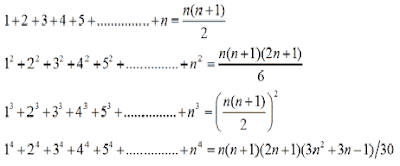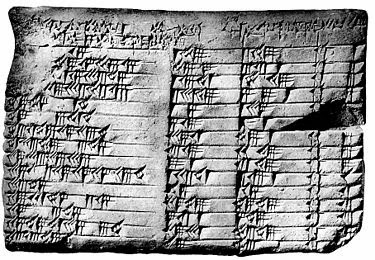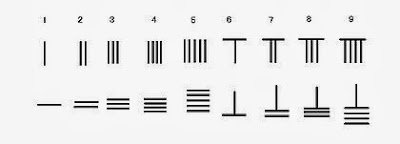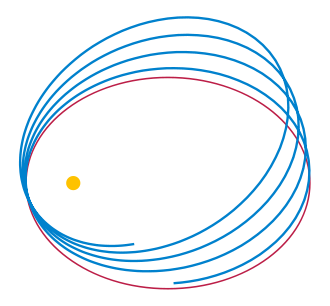- Aryabhatta was born in 476A.D in Kusumpur, India.
- He was the first person to say that Earth is spherical and it revolves around the sun.
- He gave the formula (a + b)2 = a2 + b2 + 2ab
- He taught the method of solving the following problems:
- Aryabhata was the first scientist to provide an approximate value for the mathematical constant π(pi). Generally, we say n 22/ 7, but actually Aryabhata had more to say !
- He gives the value correct to five decimal places. A circle of diameter 20,000 units has a circumference approximately equal to (100 + 4) x 8 + 62,000 = 62,832. This can be represented in the form of an equation:
- π (circumference / diameter) = (62,832 / 20,000) = 3.1416. What is really remarkable in the work of Aryabhata is the use of the word aasanna, which means approximately. This contribution of Aryabhata was proved only about 8 centuries later !
- Brahmagupta [597–668 AD] was an Indian mathematician and astronomer.
- He wrote many important works on mathematics and astronomy. His best known work is the Brāhmasphuṭasiddhānta (Correctly Established Doctrine of Brahma), written in 628 in Bhinmal. Its 25 chapters contain several unprecedented mathematical results.
- Brahmagupta was the first to use zero as a number. He gave rules to compute with zero. Brahmagupta used negative numbers and zero for computing.
- A positive number multiplied by a positive number is positive.
- A positive number multiplied by a negative number is negative.
- A negative number multiplied by a positive number is negative
- A negative number multiplied by a negative number is positive.
- The modern rule that two negative numbers multiplied together equals a positive number first appears in Brahmasputa Siddhanta.
- The book also consisted of many geometrical theories like the ‘Pythagorean Theorem’ for a right angle triangle. Brahmagupta was the one to give the area of a triangle and the important rules of trigonometry such as values of the sin function.
- He introduced the formula for cyclic quadrilaterals. Area of a cyclic quadrilateral with side a, b, c, d= √(s -a)(s- b)(s -c)(s- d) where 2s = a + b + c + d Length of its diagonals =
- He also gave the value of ‘Pi’ as square root ten to be accurate and 3 as the practical value. Additionally he introduced the concept of negative numbers.
- It is composed in elliptic verse, as was common practice in Indian mathematics, and consequently has a poetic ring to it. As no proofs are given, it is not known how Brahmagupta’s mathematics was derived.
- He was born in a village of Mysore district.
- He was the first to give that any number divided by 0 gives infinity (00).
- He has written a lot about zero, surds, permutation and combination.
- He wrote, “The hundredth part of the circumference of a circle seems to be straight. Our earth is a big sphere and that’s why it appears to be flat.”
- He gave the formulae like sin(A ± B) = sinA.cosB ± cosA.sinB
- He was born on 22nd of December 1887 in a small village of Tanjore district, Madras. He failed in English in Intermediate, so his formal studies were stopped but his self-study of mathematics continued.
- He sent a set of 120 theorems to Professor Hardy of Cambridge. As a result he invited Ramanujan to England.
- Ramanujan showed that any big number can be written as sum of not more than four prime numbers.
- He showed that how to divide the number into two or more squares or cubes.
- when Mr Litlewood came to see Ramanujan in taxi number 1729, Ramanujan said that 1729 is the smallest number which can be written in the form of sum of cubes of two numbers in two ways, i.e. 1729 = 93 + 103 = 13 + 123 since then the number 1729 is called Ramanujan’s number.
- In the third century B.C, Archimedes noted that the ratio of circumference of a circle to its diameter is constant. The ratio is now called ‘pi ( Π )’ (the 16th letter in the Greek alphabet series)
- The largest numbers the Greeks and the Romans used were 106 whereas Hindus used numbers as big as 1053 with specific names as early as 5000 B.C. during the Vedic period.
- She was born in 1939
- In 1980, she gave the product of two, thirteen digit numbers within 28 seconds, many countries have invited her to demonstrate her extraordinary talent.
- In Dallas she competed with a computer to see who give the cube root of 188138517 faster, she won. At university of USA she was asked to give the 23rdroot of9167486769200391580986609275853801624831066801443086224071265164279346570408670965932792057674808067900227830163549248523803357453169351119035965775473400756818688305620821016129132845564895780158806771.She answered in 50seconds.
- The answer is 546372891. It took a UNIVAC 1108 computer, full one minute (10 seconds more) to confirm that she was right after it was fed with 13000 instructions.
- Now she is known to be Human Computer.



.jpg)
.jpg)





